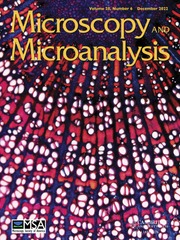Article contents
Functional Imaging of Neurotransmitters in Hymenolepis diminuta Treated with Senna Plant Through Light and Confocal Microscopy
Published online by Cambridge University Press: 13 November 2018
Abstract
Previous studies have shown the anthelmintic efficacy of Senna alata, Senna alexandrina and Senna occidentalis on the zoonotic parasite Hymenolepis diminuta through microscopic studies on morphological structure. The present study is based on the light and confocal microscopic studies to understand if Senna extracts affect neurotransmitter activity of the parasites. A standard concentration (40 mg/mL) of the three leaf extracts and one set of 0.005 mg/mL concentration of the reference drug praziquantel were tested against the parasites, keeping another set of parasites in phosphate buffer saline as a control. Histochemical studies were carried out using acetylthiocholine iodide as the substrate and acetylcholinesterase as the marker enzyme for studying the expression of the neurotransmitter of the parasite and the staining intensity was observed under a light microscope. Immunohistochemical studies were carried out using anti serotonin primary antibody and fluorescence tagged secondary antibody and observed using confocal microscopy. Intensity of the stain decreases in treated parasites compared with the control which implies loss of activity of the neurotransmitters. These observations indicated that Senna have a strong anthelmintic effect on the parasite model and thus pose as a potential anthelmintic therapy.
- Type
- Micrographia
- Information
- Copyright
- © Microscopy Society of America 2018
Footnotes
Cite this article: Ukil B, Kundu S and Lyndem LM (2018) Functional Imaging of Neurotransmitters in Hymenolepis diminuta Treated with Senna Plant Through Light and Confocal Microscopy. Microsc Microanal. 24(6), 734–743. doi: 10.1017/S143192761801526X
References
- 2
- Cited by




